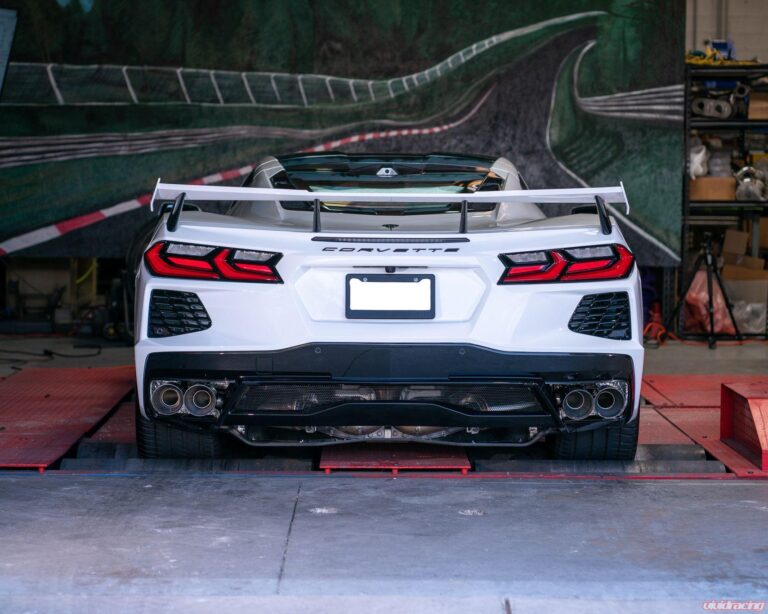How to Test Your Catalytic Converter: Simple Tips for Maximum Efficiency
To test your catalytic converter, you can use a digital multimeter or an emission analyzer to check the readings from oxygen sensors and compare them with the manufacturer’s specifications. Catalytic converters play a crucial role in reducing harmful emissions from vehicles, ensuring they meet the required environmental standards.
Over time, these converters can become less efficient or even fail altogether, leading to increased pollution and potential performance issues. Hence, it is essential to regularly test your catalytic converter to ensure it is functioning optimally. We will explore different methods you can use to test your catalytic converter and determine if it needs replacement.
By following these simple steps, you can save on costly repairs, protect the environment, and keep your vehicle running smoothly.

Credit: www.amazon.com
**why Testing Your Catalytic Converter Is Important**
Testing your catalytic converter is a crucial step in maintaining the health and performance of your vehicle. The catalytic converter plays a vital role in reducing harmful emissions from the engine, converting them into less harmful substances through a catalyst-induced chemical reaction. Regular testing of the catalytic converter ensures that it is functioning optimally, allowing it to effectively reduce harmful pollutants in your vehicle’s exhaust gases.
By testing your catalytic converter regularly, you can identify any potential issues early on. Some benefits of regular testing include:
| 1. Enhanced Fuel Efficiency | – A properly functioning catalytic converter improves fuel efficiency by ensuring the engine operates at optimal levels. |
| 2. Compliance with Emissions Standards | – Regular testing ensures that your vehicle meets the required emissions standards, avoiding potential legal issues. |
| 3. Prolonged Engine Life | – A faulty or clogged catalytic converter can negatively impact the engine’s performance, potentially leading to costly repairs. Testing helps prevent such damages. |
In conclusion, testing your catalytic converter is essential for maintaining a healthy vehicle, improving fuel efficiency, complying with emissions standards, and prolonging the life of your engine.
**signs Of A Failing Catalytic Converter**
Signs of a Failing Catalytic Converter
Decreased fuel efficiency: A failing catalytic converter can lead to decreased fuel efficiency in your vehicle. This is because the converter is responsible for converting harmful gases into less harmful emissions. When it starts to fail, it may not be able to perform this function effectively, resulting in decreased fuel efficiency.
Unusual smells or sounds: If you notice strange smells, such as a rotten egg odor, or hear unusual sounds coming from your vehicle, it could be a sign that your catalytic converter is failing. These smells and sounds can be indicative of excess heat or a buildup of harmful gases, which can be caused by a faulty converter.
Check engine light activation: If your check engine light comes on and stays on, it could be a sign of a failing catalytic converter. The onboard diagnostics system in your vehicle is designed to detect issues with various components, including the catalytic converter. If a problem is detected, the check engine light will illuminate to alert you.
**simple Tips For Testing Your Catalytic Converter**
Testing your catalytic converter is an important step in maintaining the performance of your vehicle. There are a few simple tips that can help you accurately test your catalytic converter. Isolating the catalytic converter is the first step in the testing process. You need to ensure that no other components of the exhaust system are interfering with the results. This can be done by disconnecting the exhaust pipe just before the catalytic converter.
Visual inspection is another method to test your catalytic converter. Look for any signs of physical damage, such as dents or cracks. Additionally, check for the presence of soot or black residue, which may indicate a blockage in the converter.
Temperature testing can also provide valuable information about the condition of your catalytic converter. Use an infrared thermometer to measure the temperature of the converter at various points. A significant temperature difference between the inlet and outlet may suggest a malfunctioning converter.
By following these simple tips, you can easily test your catalytic converter and ensure that it is functioning properly, helping to reduce harmful emissions and improve the overall performance of your vehicle.
Frequently Asked Questions Of How To Test Your Catalytic Converter
How Do You Check If Your Catalytic Converter Is Bad?
To check if your catalytic converter is bad, listen for loud rattling noises, check for reduced engine performance, and inspect for a discolored or damaged converter. You may also notice a strong smell of sulfur or rotten eggs. If you experience any of these signs, it’s likely that your catalytic converter needs to be replaced.
How To Check For A Bad Catalytic Converter With A Scan Tool?
To check for a bad catalytic converter with a scan tool, connect the tool and run a diagnostic scan. Look for any trouble codes related to the catalytic converter, such as P0420 or P0430. Additionally, monitor the sensor readings to see if there are any abnormalities or fluctuations.
How Do You Unclog A Catalytic Converter Without Removing It?
To unclog a catalytic converter without removing it, use a catalytic converter cleaner, available at automotive stores. Follow the instructions on the cleaner to safely remove debris and restore proper function in your vehicle’s catalytic converter.
How Do I Know I Need To Replace My Catalytic Converter?
You may need to replace your catalytic converter if you experience a decline in engine performance, reduced fuel efficiency, or notice a strong smell of rotten eggs. Additionally, if the check engine light is illuminated and you fail an emissions test, it could indicate a problem with your catalytic converter.
Conclusion
Testing your catalytic converter is a crucial step in identifying potential issues with your vehicle’s emissions system. By following the steps outlined in this guide, you can easily determine if your catalytic converter is functioning properly or in need of replacement.
Regularly testing and maintaining this important component will not only ensure cleaner emissions but also improve the performance and fuel efficiency of your vehicle. Take the time to perform these tests and address any issues promptly to keep your car running smoothly for years to come.







